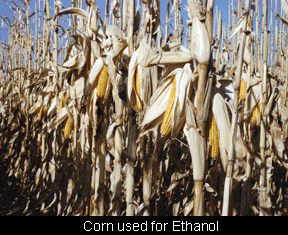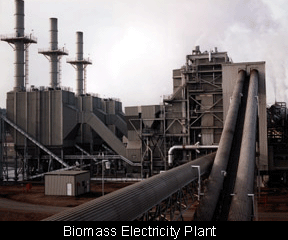Biomass, in the energy production industry, refers to living and recently living biological material which can be used as fuel or for industrial production.
The term “biomass” means any material that has been alive (organic matter) available on a renewable basis, including dedicated energy crops and trees, agricultural food and feed crops, agricultural crop wastes and residues, wood wastes and residues, aquatic plants, municipal wastes,(landfill gas) and other waste materials. It excludes organic material which has been transformed by geological processes into substances such as coal or petroleum.
Though this resource is a renewable fuel, it can still contribute to global warming. This happens when the natural carbon equilibrium is disturbed; for example by deforestation or urbanisation of green sites. Use of this organic energy includes ethanol, bio diesel, power, and industrial process energy.

Build Your Own Wood Gasifier to run your car or truck!
Bio fuels like ethanol and bio diesel, are made from plant matter instead of petroleum, and can be blended with or directly substitute for petroleum and diesel.
However, the International Food Policy Research Institute says in a report that biofuel expansions could push maize prices up over two-thirds by 2020 and increase oilseed costs by nearly half, with subsidies for the industry forming an implicit tax on the poor.
Joachim von Braun, lead author of the “World Food Situation” report and director general of the institute also said, “Surging demand for food, feed and fuel have recently led to drastic price increases … climate change will also have a negative impact on food production,”.
Growing financial investor interest in commodity markets as prices climb is fuelling price volatility, and world cereal and energy prices are increasingly closely linked.
With oil prices hovering around $90 a barrel, this is bad news for the poor, who have already suffered “quite dramatic” impacts from a tripling in wheat prices and near-doubling in rice prices since 2000, the report said. See also the article Biofuels vs Food by Bob Doppelt.  Electricity Using organic material involves combining this material with coal in existing coal-fired boilers. Coal-fired boilers can handle a pre-mixed combination of coal and biomass in which the material is combined with the coal in the feed lot and fed through an existing coal feed system. Alternatively, boilers can be retrofitted with a separate feed system for the organic matter, so it actually mixes with the coal inside the boiler.
Electricity Using organic material involves combining this material with coal in existing coal-fired boilers. Coal-fired boilers can handle a pre-mixed combination of coal and biomass in which the material is combined with the coal in the feed lot and fed through an existing coal feed system. Alternatively, boilers can be retrofitted with a separate feed system for the organic matter, so it actually mixes with the coal inside the boiler.
A brief description of each type of biomass is provided below:
Agricultural residues are generated after each harvesting cycle of commodity crops. A portion of the remaining stalks and material left on the ground can be collected and used for energy generation purposes. Wheat straw and corn stover make up the majority of crop residues in the United States.
Energy crops are produced solely or primarily for use as feed stocks in energy generation processes. Some energy crops include hybrid poplar, hybrid willow, and switchgrass, grown on cropland acres currently cropped, idled, or in pasture. Another ‘crop’ in the early stages of research and commercialisation is algae.
Forestry residues are the materials remaining in forests that have been harvested for timber. Timber harvesting operations do not extract all forest material, because only timber of certain quality is usable in processing facilities. Therefore, the residual material after a timber harvest is potentially available for energy generation purposes. Forestry residues are composed of logging residues, rough rotten salvageable dead wood, and excess small pole trees. The key here is ‘residue’, under no account could forest products be taken to generate power or this would defeat the whole purpose.
Urban wood waste/mill residues are waste woods from manufacturing operations that would otherwise be landfilled. The urban wood waste/mill residue category includes primary mill residues and urban wood such as pallets, construction waste, and demolition debris, which are not otherwise used.

|
BiomassTechnologies
Landfill Gas What is Bio fuel? Palm Oil Bio diesel Bio diesel from Algae Bio diesel from Tallow Ethanol Bio fuel Bio fuel Ethics Wood Gas Generator
|
